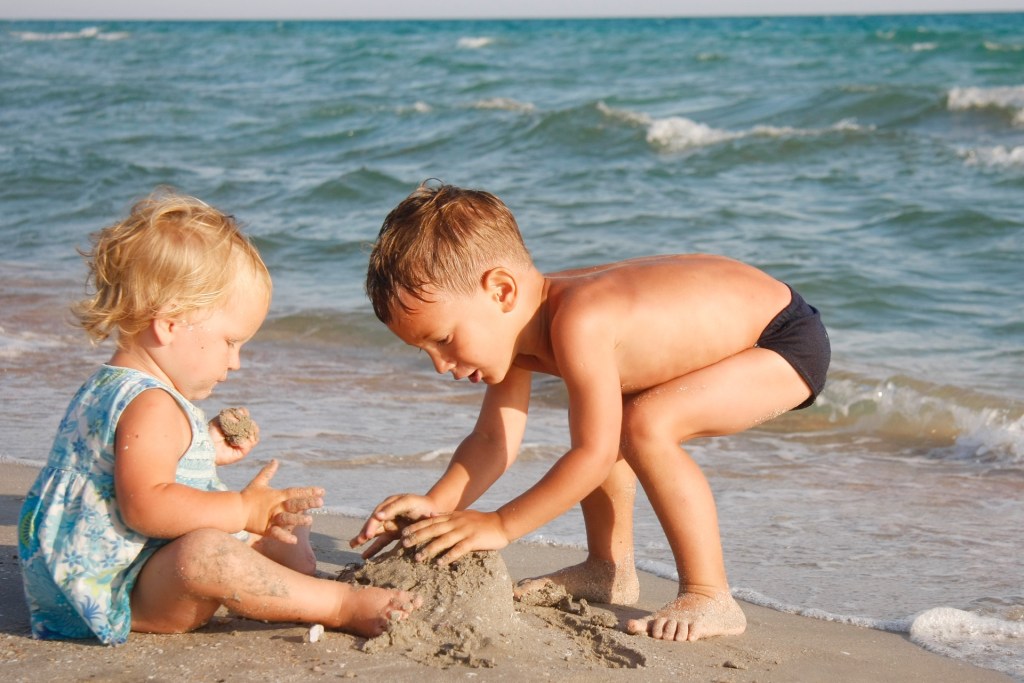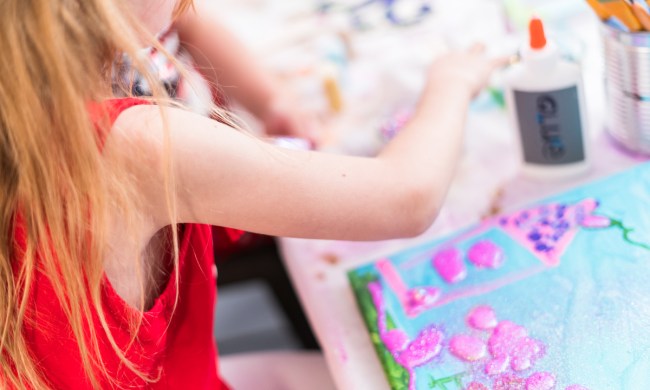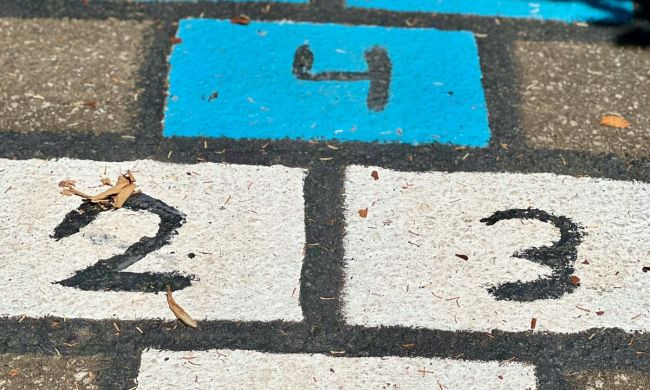Family trips to the beach can make wonderful memories and sometimes even better framed photos on your wall. While those types of vacations can seem blissful and breezy, toddler parents may cringe at the idea of taking their tottering 2-year-olds to the beach on a hot and bustling summer day. To some parents, keeping their toddlers entertained and occupied under their own roof can seem challenging at times, let alone a trip to a crowded vacation spot.
If your loved ones have a beach trip on the itinerary for your next vacation, you may be beginning to feel panic at the thought of keeping your tot happy and content while you’re also soaking up the sunshine and sinking your toes in the sand. It’s important to keep in mind that while traveling with toddlers, less is usually more, especially when it involves a trek across the sand dunes for the day. To help get the creative ball rolling for parents, we bring you five fun ways to occupy your toddler at the beach.

Bring a kiddie pool
Now, this may seem to go against the rule mentioned above — the “less is more when it comes to toddlers.” But by taking your own toddler-friendly pool with you, you are personalizing your beach experience by allowing your child to splash and play in the water in a much safer and secure environment. By bringing your own pool, you also customize how much water your little one is exposed to. Parents can allow their tots to freely experience the ocean while safely on shore and away from fast-moving undertows.

Build a sandcastle
While this may seem extremely cliched, children of any age can truly enjoy building a sandcastle along the beach. Simple toys such as a pail and shovel can entertain little ones for a few hours if it’s done the right way. When constructing the sandcastle, parents may want to consider suggesting their toddler try to replicate a favorite character’s home, such as a princess’ castle or a pirate ship. Encourage your little one to add decorations and detailing with beach items on hand such as seashells, driftwood, or smoothed and edge-free beach glass.
Practice writing in the sand
There’s no better time than the present to start introducing your toddler to learning. In fact, most children’s shows these days incorporate learning into just about every part of their storyline, including teaching letters, numbers, and colors. What better way to get the ball rolling than to start practicing those elements while sitting on the beach? Simply grab a stick or use your finger to draw letters and numbers in the sand. Take your toddler’s hand in yours, using either the stick or their finger, and slowly go over each letter or number, showing your little one how to write them out. Encourage them to attempt to imitate your drawing by recreating the letter or number in the sand, as well. With the beach as your background, this form of schooling seems less restrictive and structured, making for a more enjoyable time for all.

Create beachfront habitats
If you sense your little one has a knack for animals and science, you may be curious about how to include a casual lesson on how ocean animals may live and survive. This may seem like a bigger concept than your toddler can grasp at first; however, the idea here is simply to introduce the idea that different environments are necessary for different living creatures. For example, by recreating a habitat for fish such as an ocean pool, your toddler can begin to understand that fish need different elements in order to live. To create an ocean-pool habitat, you will need to:
- Dig a hole near the edge of the water where the ocean’s waves can nearly reach without flooding into it.
- After the hole is dug, press down firmly around each side of the hole, including the base, forming a smooth bowl shape.
- Utilize different beach elements such as shells, driftwood, or seaweed and add them to the hole.
- Slowly add water, creating a terrarium-style environment that your little one can observe.
- While building the ocean pool, you may ask your little one questions such as: “How do you think fish can live in the ocean?” or “What type of food do you think fish eat?” These types of questions can help kick-start your little one’s interest in animal science or marine life.
Collect seashells
This may seem like a given to some folks, but to others, this idea may be the best one on the list. If your kiddo becomes restless or needs to burn off extra energy, simply grab a pail and start looking for interesting and eye-catching seashells in the sand. There is something so special about finding the most unique and striking shells possible among the mounds of microscopic glass that elicit joy and laughter from kids of any age. Not only does this occupy their mind and your time, but it also provides a trinket or souvenir that your child chose specifically for themselves or loved ones at home, such as grandma or grandpa.
Keeping your toddler happy, smiling, and entertained while you’re stretching in the sand may seem something akin to holding water in your hands, but doing so may not be as difficult as some parents may think. With a little preparation, a few key toys or pieces of equipment, and some creativity, toddler moms and dads will soon have their tots bursting with energy, digging for seashells and hermit crabs, or splashing in the salty water without a care (or a tear) in the world.



